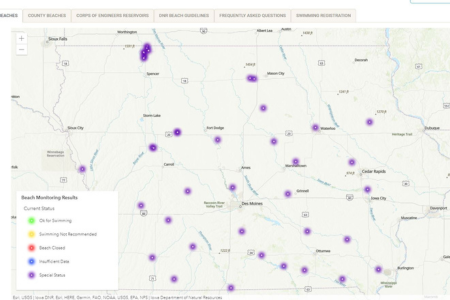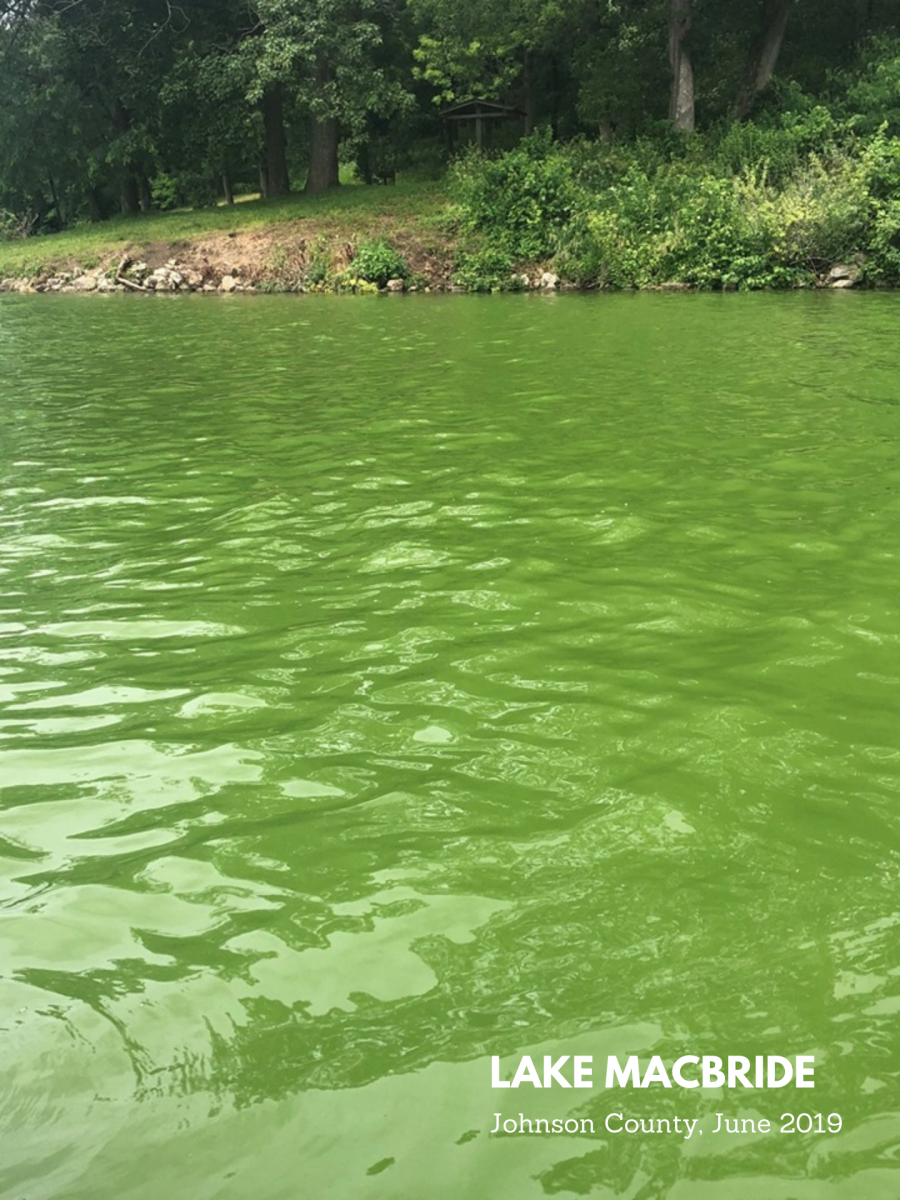Welcome Back! It's Weekly Water Watch 2023
posted
by Alicia Vasto on Friday, May 26, 2023
With the Memorial Day holiday upon us, the start of summer recreation, and weekly beach monitoring, summer has begun! With that comes the start of IEC’s Weekly Water Watch series. You can rely on us to provide beach advisories every Friday and timely water news throughout the summer recreation season.
Our hope this summer, and every summer since we started Weekly Water Watch, is that you’ll be able to get outside and enjoy Iowa’s rivers and lakes, learn more about Iowa’s water issues, and gain tools and knowledge to feel empowered to call for policy change to protect and improve our precious natural resources.
 Iowa state parks open fully this weekend, and the Iowa Department of Natural Resources (DNR) and the U.S. Army Corps of Engineers Rock Island District are now conducting weekly beach monitoring. This year, the Iowa DNR has updated its beach monitoring webpage and map. The updated webpage has the same information, but in an easier-to-digest format. It also now includes the full results of the DNR’s monitoring, so you can see what the E. coli and microcystin levels are at every beach each week.
Iowa state parks open fully this weekend, and the Iowa Department of Natural Resources (DNR) and the U.S. Army Corps of Engineers Rock Island District are now conducting weekly beach monitoring. This year, the Iowa DNR has updated its beach monitoring webpage and map. The updated webpage has the same information, but in an easier-to-digest format. It also now includes the full results of the DNR’s monitoring, so you can see what the E. coli and microcystin levels are at every beach each week.
We will continue to provide the full list of beach advisories in our newsletters and updated on our Google map each week. Monitoring will continue through Labor Day weekend. This week, there are three beach advisories at monitored public beaches.
Why do we care about Iowa’s beaches?
Iowa’s lakes are an important part of the quality of life we enjoy in our state. We know Iowans love being outside and on the water. Additionally, beaches and water recreation sites are critical economic drivers for many Iowa communities; in some cases, those same water bodies are drinking water sources.
IEC shares beach advisory information as part of Weekly Water Watch in an easy-to-understand format that makes it possible for you to plan a weekend beach trip with confidence. We also hope you’ll learn a little more about why our beaches and water are at risk, and what you can do to help. Check out the data we’ve tracked on Iowa’s beach advisories.
What is E. coli and why is it monitored?
E. coli are bacteria that indicate when fecal matter is present in the water. Some strains of E. coli can cause adverse human health impacts, but the presence of this bacteria usually means there are other harmful pathogens present. These pathogens can cause diarrhea and skin, ear, and respiratory infections. Children, the elderly, and people with weakened immune systems are especially at risk. Fecal matter at beaches can come from a number of sources, including manure spills or leaching, improperly operated septic systems or sewage treatment plants, stormwater runoff, or direct contamination from waterfowl, livestock, pets, or humans.
What are microcystin and harmful algae blooms (HABs)?
 Harmful algae blooms (HABs) occur when blue-green algae (cyanobacteria) proliferate in calm, warm, nutrient-rich waters. The cyanobacteria can release microcystin, a toxin that is dangerous to humans and animals. The Iowa DNR issues swim advisories when microcystin is detected at or above 8 micrograms per liter. Iowa DNR issued 12 swim advisories for microcystin last summer.
Harmful algae blooms (HABs) occur when blue-green algae (cyanobacteria) proliferate in calm, warm, nutrient-rich waters. The cyanobacteria can release microcystin, a toxin that is dangerous to humans and animals. The Iowa DNR issues swim advisories when microcystin is detected at or above 8 micrograms per liter. Iowa DNR issued 12 swim advisories for microcystin last summer.
Coming into contact with microcystin by touching or swimming in the water, or swallowing or breathing in water droplets, can cause serious illness. Pets are especially endangered by coming into contact with an HAB; ingesting microcystin can very quickly cause seizures and even death in dogs. Never let your dog drink or play in the water or along the beach if microcystin has been reported, or if the water appears vivid green or looks like paint.
Learn more about HABs and microcystin from Iowa experts.
Thank you for reading and following along with us this summer!
- beach advisories
- clean water
- dnr
- e. coli
- harmful algal blooms
- microcystin
- public beaches
- public health
- recreation
- toxic algae
- water quality
- water recreation
- water safety